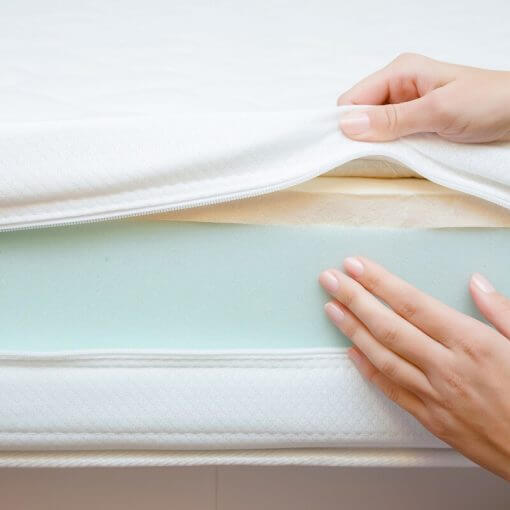Mattress for allergy
Eye tearing, shortness of breath, rhinitis and coughing are just a few of the many symptoms of allergy. Allergy-related complaints affect a large part of the population. Many patients complain that their allergy symptoms intensify in the evening just before bedtime, at night or in the morning. Why is this happening? Allergy to mites is likely to occur. It can also be accompanied by skin changes, itching and a rash. In that case, could the bed we sleep on have something to do with the allergy? Yes, and a lot!
Cause of allergy - mites
House dust mites are arachnids that are invisible to the naked eye and like warm, dark and humid places. They find such conditions mainly in beds and mattresses, where they are additionally supplied with food in the form of human dead skin and various pollutants. These arachnids feed until they burst and then they become food for other individuals. Live mites do not cause allergies, only their body parts and faeces cause a reaction in the human body when they enter through the airways.
Mattresses in which mites multiply are spring mattresses (see other types of mattresses). The spaces between one spring and another provide ideal conditions for growth, and it is a safe place - inaccessible to humans. It is impossible to reach it with a detergent or a vacuum cleaner. Accumulating dust and dirt and the lack of ventilation cause a colony of pathogenic microorganisms inside the spring mattress. Knowing the facts, it can certainly be said that spring mattresses can contribute to the health of an allergy sufferer. Therefore, it is worth thinking about changing your bed and choosing an anti-allergic mattress.
What mattress for an allergy sufferer?
Choosing a foam mattress will be the first step to improve the well-being and health of an allergy sufferer. Mattresses made of high-flexible foam, latex or plain polyurethane foam are available on the market. Why are these mattresses suitable for allergy sufferers? Mainly because they are hygienic. Foam materials are airy and the fresh air makes it difficult for mites to get caught. Moreover, they do not contain any free space, which makes it difficult for these arachnids to grow in size and survive.
Latex mattresses are anti-allergic. They can be made of both natural and synthetic latex. Such bedding will be an ideal choice for an allergy sufferer because latex prevents the development of fungi, mites and other pathogenic microorganisms. This is due to one of the properties of latex, i.e. the lack of moisture absorption, so that the mites do not have the right conditions to survive. Moreover, latex is not only hygienic, but also extremely flexible and resilient, which guarantees high sleeping comfort. An important part of the mattress equipment is also the cover. It should be removed and washed at least once a month.
Mattress for allergy to mites - tips
We offer a few tips for allergy sufferers, which will have a positive impact on their well-being.
First of all, you should change your current bed to a foam mattress, preferably from latex or latex-like foam. Secondly, you should often wash the bed linen, vacuum and wash the fabrics in the bedroom, such as curtains, carpets and blankets. Frequent ventilation and the use of natural lavender essential oil should also help to combat allergies and mites.
Take care of your sleep hygiene and get rid of allergies - read more about which mattress to choose on the home page.
